In a time of crisis, it will be to your advantage to have a shelter/panic room for personal and family safety.
If you try to hide your activities, there is always a chance that you will slip up. The more people become curious about “loose ends”, the more likely it is they will find out what you are doing and store that information away.
In a time of major social collapse, that can present many problems. Rather than try to hide the fact you are building a panic shelter, it is best to use methods that enable you to hide your shelter in plain sight.
Best Buildings For Panic Rooms/ Shelters In The City
If you live in a city, chances are you don’t own the building. Regardless of whether the dwelling accommodates 2 to 4 families or dozens, it will be difficult, at best to build a panic room/shelter. Before you even begin trying to secure your apartment, it is important to choose an appropriate building design.
In this case, it is best to try and rent an apartment in a building made of stone or brick. These heavy buildings can take a lot of abuse and still stay standing. These buildings may also have basements that can be used to shelter in as long as there is no chance of flooding.
Wood framed structures with siding are not as secure as people think they are. Even if all the windows and doors have been up graded with steel doors and window bars, it is easy to destroy the building itself.
Determined intruders can still tear off the siding, knocking down wall studs, and breaking through the inner sheet rock walls. They can also start fires and use other means to break into the walls of the home.
Panic Shelters In Rural Settings
As with buildings in the cities, it would be best to start off with a home made of brick or stone. If necessary, fortify outer walls to make them thicker and heavier. Do not forget to use steel outer doors and tasteful steel window bars.
Insofar as choosing a good room for a panic room, it is best to choose a room without windows. If you are building your own home, it may be easier to simply include a hidden room within the plans.
Building a basement into the home can also be used as a second shelter/panic room or supply room. Hidden doors could be used to separate the basement into several hidden rooms and an escape tunnel. Always build the house on the high ground to protect it from flooding.
If you choose to add an escape tunnel in the basement, it will also make sense to build a complete underground shelter that can be used as a panic room and also for longer term living.
It will be to your advantage to leave the trees and under growth around the building site to keep prying eyes from observing what is going on. Have a mail box and have the mail sent there. If anyone notices what is going on they would assume that someone is just building a new house there and respect their privacy.
Choosing Materials With An Eye Towards Secrecy
When it comes to keeping the actual building process a secret, there are some materials that will work better than others. For example, even though you may not be able to avoid using some nails during the construction process, the noise of hammering them can give away your secret.
By the same token, it is very important to avoid using materials that require the usage of power tools or anything else that would give away your secret. If you must use these items, make sure that you disguise your activities by working on another, highly visible project at the same time.
In this case, you might build some outdoor container garden planters, or anything else that would help people tune out the noise you are making while filing away information about something other than building a panic room within your home.
For each material on your list, evaluate it for the way it will look when bringing it in, what sounds will be made while you are working, and what kind of odors may be released.
Since every building and working area is a bit different, you must also compare these elements to the materials in question. Someone with a sound proofed basement will have an easier time disguising the use of power tools, yet have a harder time controlling the escape of odors into the surrounding building.
How To Buy Materials And Bring Them Home Without Alarming The Neighbors
Since secrecy is very important when building a panic room/shelter, do not buy all of the needed building supplies in one place or at one time. Purchases need to be bought at different times, at different suppliers, and most importantly, at different distances from the building site.
Inexpensive, Easy to Build Cellar Will Protect Your Life and Supplies in the Next Crisis
If you are purchasing from hardware stores or lumber yards, you can also make other small purchases at different times so that your panic room/shelter materials don’t stand out. Remember, most stores these days have camera surveillance, and facial recognition makes it easy to spot people no matter where they happen to be shopping.
You will need to exercise considerable care, especially if inventory tags are setting off certain flags in various computer systems.
The Following Are Good Places To Get The Building Supplies:
- Large commercial building supply stores. All of the building supplies are new and have never been used before. These supplies will cost more, but they will also last longer. You will also run the greatest risk of being flagged depending on what you buy.
- Reclaimed/surplus building supply outlets. These building materials should cost you less than buying new materials, but buyer beware. You will need to carefully inspect all building materials for quality, strength, or hidden faults.
- Private individuals online or offline selling unused or unwanted building supplies. If the building materials meet your requirements this is a good place to get them. Most of these individuals will give you a good price. They also don’t ask questions, and don’t give receipts. Before you buy, however, do some research to make sure there are no reported thefts of these kinds of materials. You would not want to get caught with stolen materials on the way home or at some other point in time.
- Other family members that no longer need or want the building supplies may also be a viable option.
Paying For Building Supplies
As with choosing the location for buying supplies, you must also be careful about how you pay for them. Here are some options from best to worst insofar as the ability to protect your privacy while buying.
- Trading or bartering for the needed supplies. This is an excellent way to get supplies, tools, and building materials. The nice thing about trading and bartering is that there are no receipts and it can’t be traced. This helps to keep the building project a secret. Since bartering is also a process that often involves haggling, it will be good practice for a major social collapse or other situation where you may need to use these skills.
- Paying cash for the materials. This is a good way to buy brand new supplies or other materials that you can’t purchase from other sources. Just remember, even if you do pay in cash, there may be cameras at the checkout or elsewhere in the store that can be used to connect your purchase to the photos to form a paper trail.
- Paying for materials with major credit cards. Even buying in small quantities at different stores is risky because the paper trail will always follow you.
- Using store credit to pay for materials. This is also not a good idea. Here there would be a very strong paper trail leading directly to you. Even if you choose one of the big chain stores, it will be easy to find you within the store’s proprietary customer base files.
How To Get The Building Supplies To The Building Site
It’s extremely important that all building supplies get to the building site unnoticed by people living nearby or passing through the area. As long as you are buying materials in small quantities, it should be possible to bring them home in your regular vehicle.
For small items that can fit in a bag, do not forget to put the hardware store bag in one from another store. For example, if you bought a box of nails, you can slip them into a grocery bag instead of taking a chance on someone noting that you bought something from a hardware store.
Disguising and concealing items like lumber or sheet rock can be much more difficult.
You will be best served by having these items cut down to size and then move them into your home at night, or when no one is watching. While the supplies are in your vehicle, make sure they are covered with a blanket or something else that would prevent people from seeing what is underneath.
Getting Rid Of Construction Debris Without Being Seen
No matter how careful you are, sawdust and other debris will need to be cleaned up.
As with the building process, it is best to get rid of as much debris as possible after each work session. Make sure it looks like normal household trash. For lighter debris, you can mix it in with kitchen trash.
The soiled cat litter bag is also a good place to put construction debris because people that go dumpster diving will avoid those bags as much as possible.
If you have larger materials such as left over wood or sheet rock, it is best to cut them up so they are small enough to fit in the trash. You can sell them to someone outside your local area, or donate them to building relief programs.
Even though you may feel tempted, never burn construction debris. Aside from being dangerous, and possibly illegal, it will also reveal that you are using building materials in your home.
When burning outside, it is also possible for the fire to get out of control and spread to other buildings, set fire to woodlands, or other fields.
If the fire should get out of control you could be held responsible, pay for the damages, or be arrested for arson. Perhaps it can be said that all these problems would make it useless to have a panic room/shelter, seeing as how you won’t be in a position to use it.
How To Work On Your Shelter/Panic Room Without Alarming Anyone
Secrecy must always be maintained on the building of the shelter/panic room. Before you begin working, plan carefully in terms of when you will work and how you will cover your activities. Here are some things to consider:
- If you must get building permits, don’t show the shelter/panic room area in any of the plans that will be on record with the local city or county building permits office. What looks official and proper will keep most unwanted building inspectors from dropping by for unannounced construction site inspections. In most localities in the country, it may not be legal to upgrade inside buildings without a permit. Make sure you know what the laws are in your area, and what kind of modifications you can make without running into problems.
- Have a believable cover story. For the local friends and the neighborhood, just give them a simple believable story of what you are doing and why. If it is done right, most people would not give it a second thought and after a while won’t care, and won’t ask about how the work is progressing.
- With the exception of moving materials in, don’t work at odd times of the day or night. People generally notice things that are out of place during the night or day. If it becomes a habit, the observer will begin watching what is going on. Once the rumor mill has begun, the security of the project has been compromised.
- Keep your noise levels down. If you must make a lot of noise during the construction of the shelter/panic room, try to do it at times of the day when most of your neighbors are away from home. If neighbors are constantly hearing loud unwanted noise coming from the construction site, they may call the police. From there, you may wind up being snagged for lack of proper permits, or run into other problems. Get ready for an unannounced building inspection or a visit from the local police if you are breaking the noise ordinances.
- While building your panic room/shelter, there are also many odors to consider. Try to use low odor paints, glues, solvents, and other materials. Use a box fan with an activated carbon filter on it to remove any escaping odors quickly and efficiently. This is especially important if you are building a panic room within an apartment and do not want your neighbors or landlord to catch on to what you are doing. If the odors are especially noticeable, you may need to work a little bit at a time and during hours when no one is around to smell the fumes.
Aside from that, if you are using oil based solvents or materials, you can cover those odors by pretending you are doing a painting or some other art type project. Don’t forget to drop hints about painting something for a class, or anything else that would reduce suspicion about your activities.
How To Build a Small Bunker in Your Backyard with $400
Needless to say, you will need to have at least something to show if anyone inquires, so don’t forget to buy some canvas, appropriate paints, and other materials.
- Don’t have building parties or invite strangers into your home during the construction process. Sometimes it’s great to have extra help with a building project, but in the case of a secret shelter/panic room, this is just asking for trouble. Even if these people are good friends or family members, there is always the chance they will give away too much information.
When building a secret shelter/panic room, it must be done in a way that won’t draw attention. As simple as that may sound, it will take considerable planning and implementation of disguises to keep others from finding out about your project.
From the moment you begin making plans and obtaining building materials to stocking the room with supplies, great care must be taken. If all goes well, you will have one more tool in your stockpile to use in the event of a major disaster, and no one else will be the wiser.


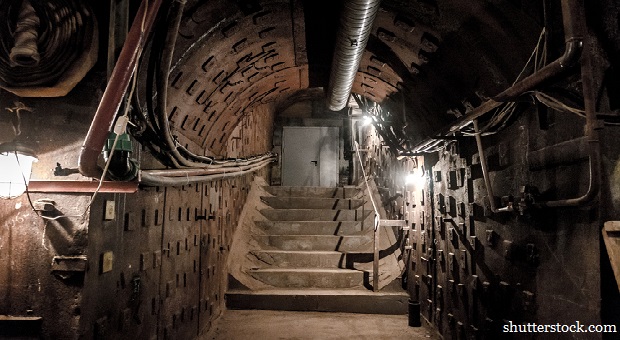


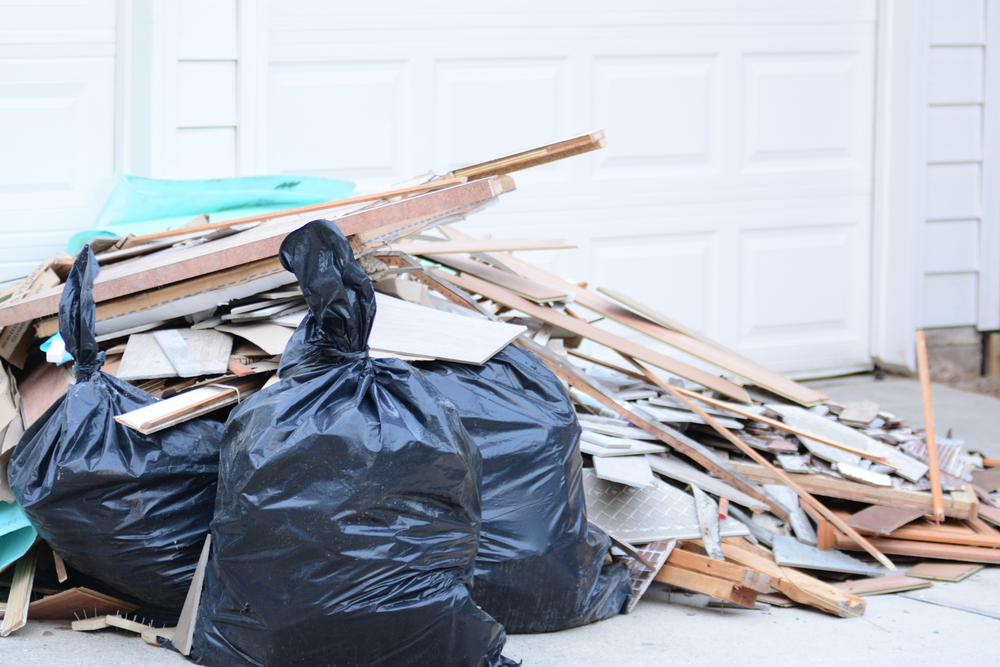

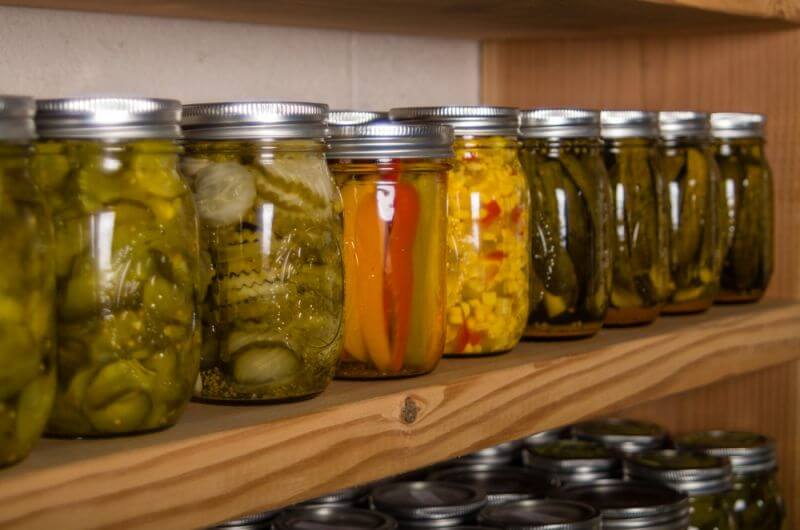
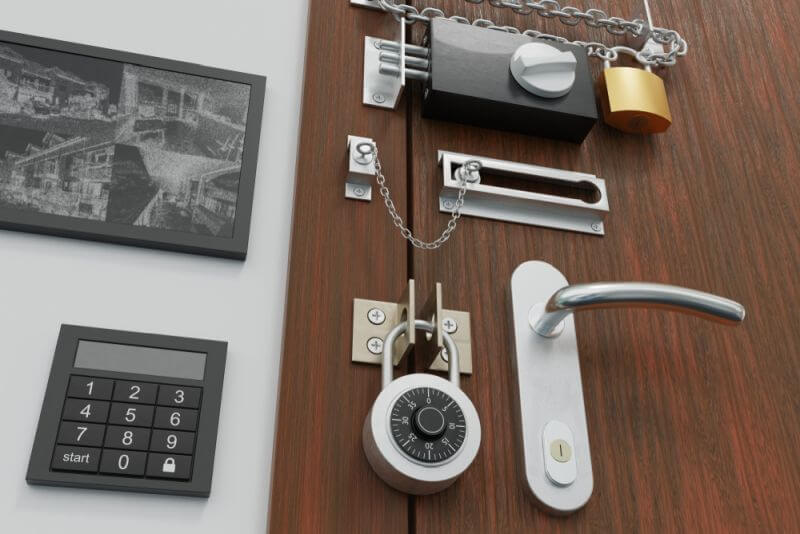
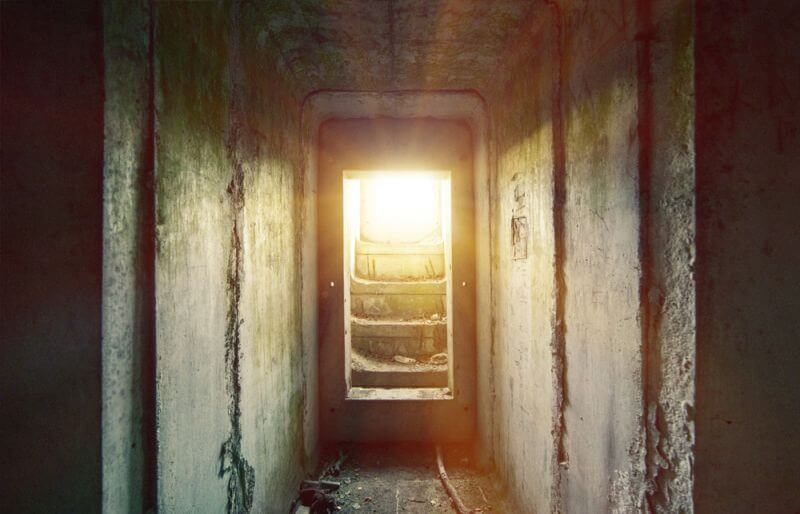
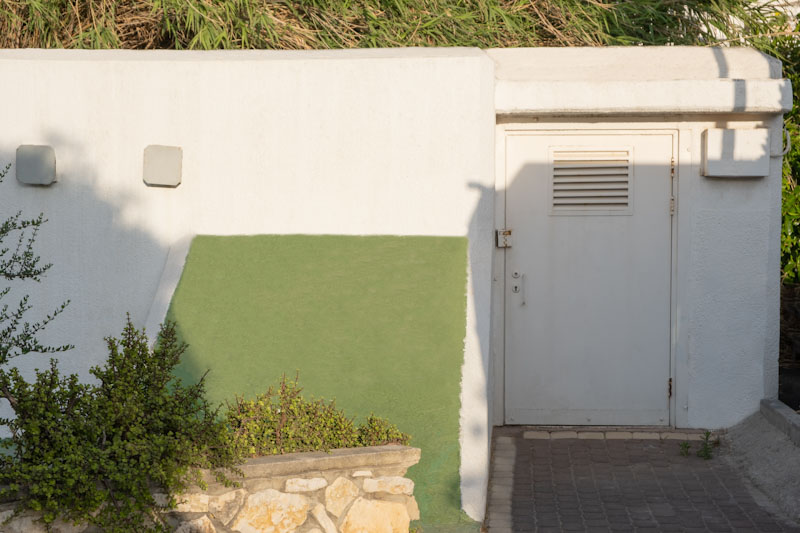

Cricket | March 23, 2018
|
What do you suggest for a panic room when you live in Florida and have no basement?
Horse | March 23, 2018
|
Seems like a practice in extreme paranoia.
Nails and screws double bagged to look like groceries ? ba.
Not going to go over the mess, seriously.
just purchase discreetly, or out of state and the use of prepaid cc hell have your cousins kids
pay/pick the stuff up if your that bent on someone knowing you bought anything.
If your that bent you can bribe a bum or dude looking for work to go in with you and pay for it all
with your prepaid cc.
This is just silly.
People buy supplies, building materials all the time just don’t be stupid about it.
OMG the dude across the street say my framing saw and the 3 2×4’s I buy every other week
while telling every single person on the street I’m ya know.. fashioning that stick to go up my ass.
… maby I should kill him ?
Dave in Ky | March 23, 2018
|
I’m with you, Horse. Can’t go around being paranoid all the time. That being said, I can see you would have to be somewhat discreet, depending on your area/neighborhood, your career (office/construction), etc. For a while I lived in a historical district in a historical town, did whatever I wanted, and always kept under the radar. That’s the main thing. Don’t draw attention to yourself.
Lnda S | March 24, 2018
|
I agree, Horse, a little over the top.
ERIC MILLER | March 23, 2018
|
The laundry, bathroom and toilet and an adjacent passageway make a good starter. As a wet area, they can be “renovated” without drawing suspicion at all. Concrete floor, brick walls and most importantly a concrete ceiling on the area can all be done quietly and legally. The concrete ceiling is to make the area fireproof. Add fireproof doors and you have a livable area even if the rest of the house is damaged or burnt.
Bruce Mc | March 23, 2018
|
Very good reasoning; how would you propose getting cement into the ceiling (floor) of a basement room?
Eric Miller | July 3, 2019
|
By careful planning. Include support columns as required. Ready mixed concrete in bags. Have all the form work prefabricated. When required, lift the floor boards. Ask any builder. Fireproofing or storm-proofing a section is no big deal. Best, of course, if you include it in a new house. A solid core with a disposable exterior.
Stan | March 23, 2018
|
The best place to build a hidden/panic room, providing you are certain there is no basement there, would be under your neighbors house. Go deep & DO NOT jeopardize his foundation. If his house is destroyed it will be more cover for you. You must provide for your own survival so it won’t be an easy task. You will still need food, water & toilet facilities. You should also have some means for an emergency exit in case you are discovered. Don’t forget a means of self defense in case you really need to defend your self.
MJ | March 24, 2018
|
Fred, you really are way too paranoid. Yes, I agree you should be as discreet as possible, but you shouldn’t act like a complete lunatic or secret agent wannabe. If you perform carpentry projects often, like I do, the neighbors won’t even notice or care, because it is a normal activity that I frequently engage in.
Frank | March 26, 2018
|
I have to credit the author with bring this to our attention. Realizing that by not keeping your actions low key that you risk providing others the chance to find out what you are doing and thus they will probably be watching you once they figure it out. I don’t preach about operational security or even use the term OPSEC. I think people often sound rather silly when they start talking about such things or begin to act like secret agents or commandos. But there is a reason to be cautious. When an emergency arises, we might find people at our door making demands of us and threatening us with force because they saw lots of food being brought into the house or noticed we have two brand new generators in our garage. We can’t under estimate people’s desire to know what others have or do. And then those lazy cheapskates will spend their money on anything but emergency food supplies because they intend to rely on your preparations, meaning they will come for your gear and supplies as if you were their personal FEMA agency.
We can be covert without becoming paranoid. I think a simple explanation or cover story is all one needs. There is no reason to get over involved in some complex lie or make anybody suspicious of your actions or behavior. The important thing is to keep quiet about what you do and not to tip anybody off by carrying firearms from your car trunk into your house or 20 bulk bags of dry food. If we just incorporate our everyday purchases with our survival supplies and maybe bring things inside at night or when nobody is around, we can do our thing without raising any eyebrows. A simple cloth bag or switching shopping bags (gun shop bag to grocery store) can be used to mask our purchases or keep onlookers from knowing where we went to. Just don’t provide big clues and act natural.
I don’t think it’s impossible to make a safe room or fortify our homes. You could be building a tool shed, guest house or maybe building a kennel for your big dogs as far as any neighbors are concerned. If you don’t say anything or advertise your business, it’s most probably that nobody will ask or care. But there are those people who don’t respect social boundaries and are intrusive. And the best way to deal with them is to give them nothing to talk about or a reason to watch you. If they annoy you ask them if they are writing a book or would like to see your birth certificate. You could even be super friendly and ask them questions until they feel uncomfortable and decide to stay away from you. Once they feel embarrassed they will understand they went to far and back off.
JC | March 29, 2018
|
Put your secret room / safe room / bunker on the plans for the house !!!
That’s brilliant.
NO ONE besides YOU ever sees the plans EXCEPT
the gen contractor, all of the subs, the bank(s), the building permit staff – shall I go on ?.
Agreed, this is a bit over the top. Some one this paranoid needs to find a mountain top or several thousand VACANT acres and start from that point
In this day and age it is simply no longer possible construct almost anything of any size or complexity and keep it completely secret from EVERYONE else unless you do ALL of the construction ALONE ( a tall order there ) and use only materials you already have or that you find left over in an abandoned mine or an old Keebler Elf tree on your property !!
Eric Miller | July 3, 2019
|
If it’s a cellar, call it a cellar. If you include bathroom and other facilities, that’s no big deal Apartment blocks have concrete ceilings on all but the top floor. Just plan it well and get a builder to do it. Call it renovations or a rumpus room if necessary. Fit it out after others have lost interest in it. Survival gear, even beds, can be located behind wall panels, with no indication of any special purpose. Just don’t call it a shelter.
TheSouthernNationalist | July 3, 2019
|
I had a building project once that required a large amount of lumber, nails, and a few other things.
The guy at the register asked me “what are you building”
I told him I was building a “doomsday machine”
He didn’t like my humor.
Nikki | September 5, 2022
|
I have a few questions that involve my home I appreciate some help on.